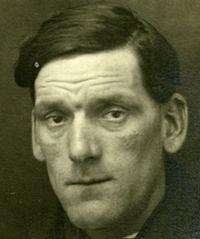 Arthur John Priest was born on this day in 1887. He earned the nickname “the unsinkable stoker” after surviving the sinking of four ships, including the Titanic and its sister ship Britannic, as well as living through two ship collisions.
Arthur John Priest was born on this day in 1887. He earned the nickname “the unsinkable stoker” after surviving the sinking of four ships, including the Titanic and its sister ship Britannic, as well as living through two ship collisions.
As a stoker, Priest was part of the “black gang” that manually shifted the hundreds of tonnes of coal each day to feed the insatiable boilers of the steamships of the time.
In 1908, Priest was working as a stoker on the passenger liner RMS Asturias when, on its maiden voyage, it was in a collision with another ship. While there was no loss of life, the ship only barely made it back into port.
Priest served as a stoker on RMS Olympic in 1911. The Olympic was a near sister ship to the Titanic and the Britannic. It collided with HMS Hawke in the Solent, tearing two large holes in Olympic’s hull, above and below the waterline, resulting in the flooding of two of her watertight compartments and a twisted propeller shaft. HMS Hawke suffered severe damage to her bow and nearly capsized.
Priest found work on RMS Titanic the following year. By good fortune, he was off duty when the ship struck the iceberg. Nevertheless, his was still a narrow escape. As described by the BBC:
The odds against his survival were steep, due to his both his physical and social position within the ship. The route to the deck took him and other members of the black gang up through a maze of gangways and corridors before they could reach the deck. By the time they emerged into the freezing night air, most of the lifeboats had already gone.
Those firemen who survived – 44 in all – swam for their lives through water just marginally warmer than freezing, wearing only the shorts and vests they worked in. Small wonder that Priest suffered frostbite.
Priest was among those who went to war, serving aboard the armed merchant vessel Alcantara. In February 1916, Alcantara intercepted the German raider Grief, which was disguised as a Norwegian ship. As Alcantara approached, Grief opened fire. There was a short, ferocious, close-range battle, at the end of which both ships were sunk.
More than 70 of Priest’s shipmates were killed and he only narrowly escaped, with shrapnel wounds.
When he returned to work, it was aboard Britannic, Titanic’s other – even bigger – sister, which was serving as a hospital ship ferrying wounded soldiers back to Britain through the Mediterranean. Having already survived a collision on Olympic and the loss of Titanic, it must have been with no small amount of trepidation that he joined the third of the celebrated White Star Liners.
On 21 November 1916, the great ship struck a mine and sank near the Greek island of Kea. Once again, he emerged from the very depths of a foundering ship alive.
On 17 April 1917, Priest again evaded death. He was a fireman aboard the hospital ship Donegal when it was torpedoed and sunk in the English Channel. He suffered a head injury and would not serve again during World War I.
After the war, Priest retired from the sea, claiming that “no one wished to sail with him after these disasters.” Despite cheating death repeatedly “the unsinkable stoker” was not long-lived. He died in 1937 at his Southampton home at the age of 49 from pneumonia with his wife Annie at his side.

As a retired stoker, all I can say is “WTF?”